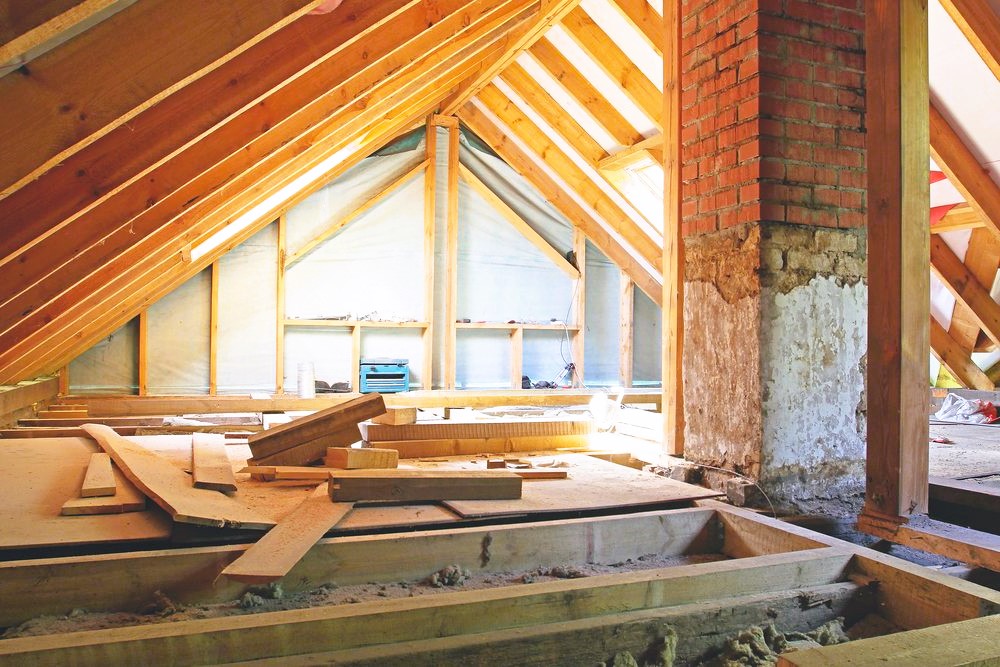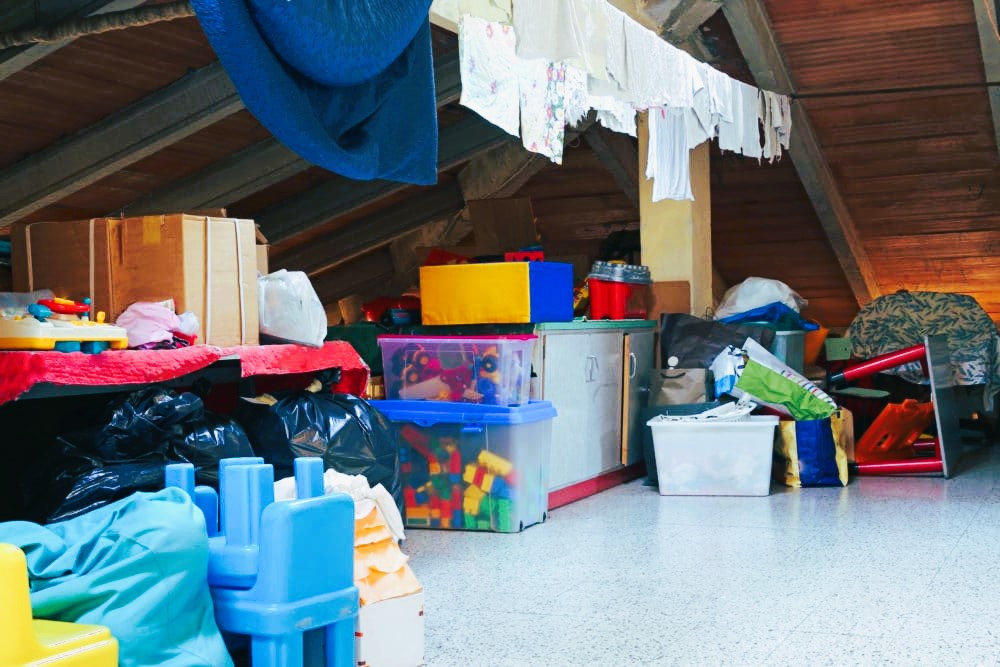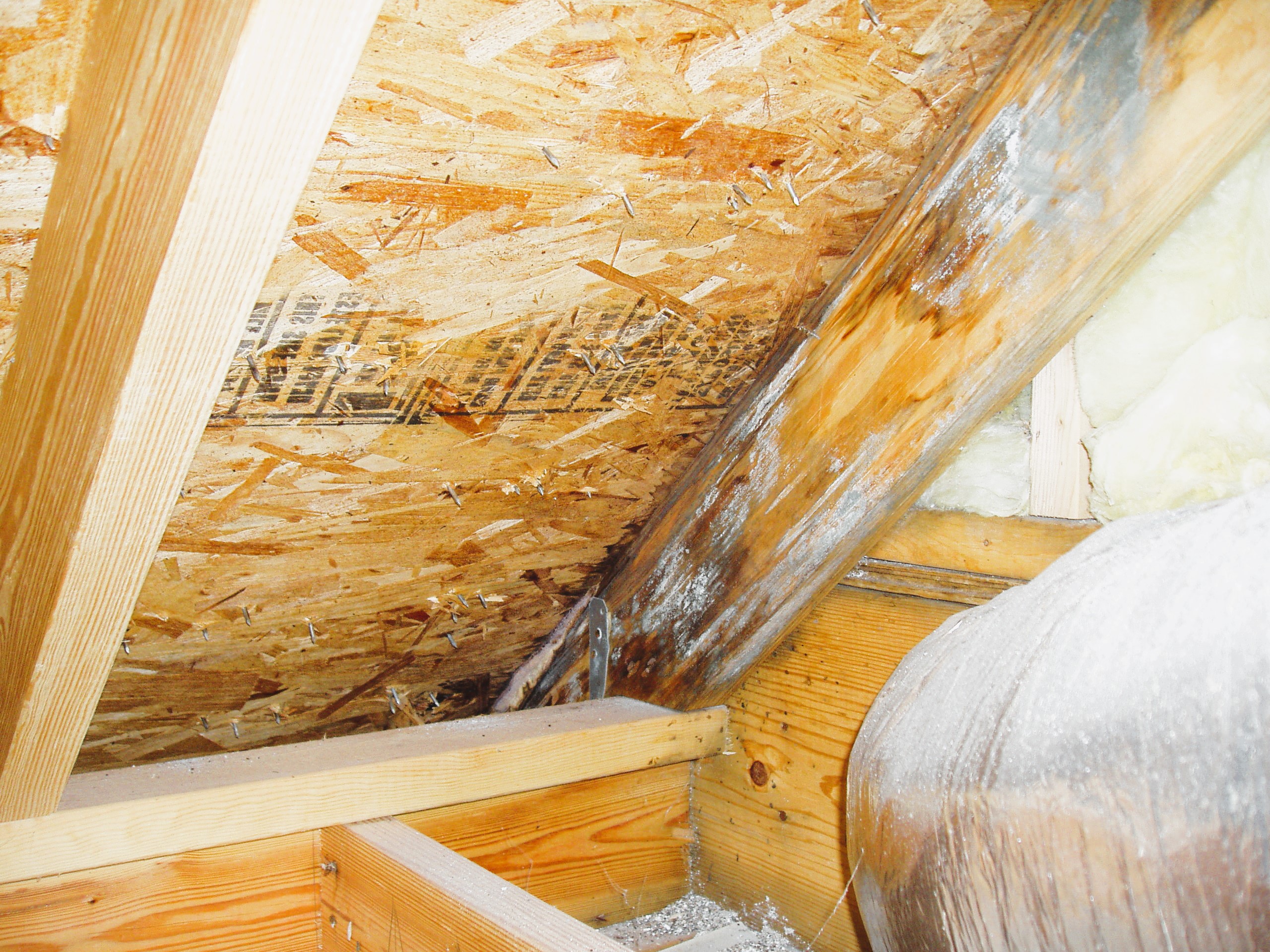Numerous inquiries reach us concerning the presence of mold or mildew stains on the sheathing and framing components within attics. Allow us to delve into the intricate processes that fostered mold growth in this location and explore effective remedies for this concern.
The genesis of this predicament lies in the formation of moisture or condensation on the attic framing and sheathing. Primarily, this occurs due to air seepage from the lower floors of the dwelling, permeating its way into the attic space. Occasionally, inadequate attic ventilation may also be a contributing factor. It is important to note that homes constructed before the 1990s were not entirely air-sealed, containing numerous concealed openings and cavities through which air can infiltrate these areas. Some of these points of ingress encompass:
- Wiring, plumbing, and chimney penetrations
- Attic hatches devoid of weather stripping or insulation
- Light fixtures, especially pot lights
- Insufficient insulation and/or a proper vapor barrier
- Inadequately controlled humidity levels within the living space

The dynamics of a home mirror those of a chimney, drawing in cold air from its lower regions and expelling it through the upper regions (known as stack effect). During winter, the warm and humid air finds its way into the attic, leading to condensation on the sheathing, which serves as the primary condensing surface. While attic insulation may impede air leakage to some extent, it fails to halt it completely, as these materials usually possess a porous nature. Even a lack of insulation can allow warm air to meet cold air, resulting in the aforementioned condition. Inspection of the inspector at the place of residence, more in this article.
Moreover, the heated indoor air carries imperceptible water vapor (humidity) from various household activities like showering, cooking, floor washing, breathing, and plant watering. When the attic and roof sheathing cool sufficiently, the water condenses into liquid moisture and subsequently transforms into frost as the temperature drops further.
If the attic’s roofing and framing timber do not dry out before the attic temperatures rise significantly, mold growth initiates on the surfaces. The most effective solution to prevent attic mold growth is to preclude the infiltration of air and moisture into the attic. By eliminating air leakage and moisture from the equation, the growth of mold will cease, potentially leading to reduced heating costs as a bonus.
Contrary to popular misconceptions, attic growth does not significantly impact indoor air quality in most cases. However, if this situation persists, it can eventually result in the decay and deterioration of building materials, leading to long-term structural issues.
To address attic moisture problems, the following steps should be taken:
(A) Alleviate internal moisture sources within the house. This involves resolving wet or damp basements, venting dryers outdoors, avoiding indoor clothes drying, placing damp firewood outside, and regulating the number of indoor plants.

(B) Properly ventilate bathrooms, kitchens, and clothes dryers to the outdoors. Ensure that all exhaust ducts are:
- Insulated in unconditioned spaces, such as attics and crawlspaces.
- Constructed of rigid materials, as flexible plastic may accumulate moisture at low points (sags) and deteriorate prematurely.
- Directed to the exterior through appropriate dedicated vent terminations (hood vents with check flaps to prevent heat loss), preferably through the roof or an end gable rather than the soffit, where humidity could backdraft into the space.
- Attached to vents using mechanical fasteners and specialized tape or foil tape (avoiding duct tape, which will fail under heat and humidity exposure).
(C) Effectively air seal the attic and ceiling to halt the escape of air and moisture from the lower floors of the house. This process includes addressing light fixtures and other ceiling penetrations such as attic hatches or pull-down steps (which are susceptible to significant heat loss) by insulating and weather-stripping them.
(D) Consider augmenting attic ventilation, if necessary. Ensure sufficient venting at the soffit/eaves and the ridge of the roof to encourage proper cross ventilation. Relying solely on gable vents or ridge vents is insufficient in this regard. More information on this topic can be found on Wikipedia.



